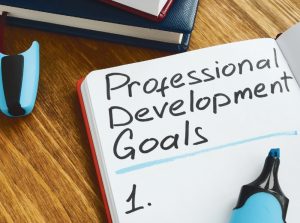Stop Killing Motivation
Leadership/Management Development – By Molly Gallagher
In our efforts to motivate ourselves and others, we may be sabotaging motivation.
We are all constantly striving to motivate ourselves and others. But what if in our efforts to motivate our learners, we end up killing their motivation instead?
Susan Fowler is a professor at the University of San Diego, motivation researcher and author of six books, including Why Motivating People Doesn’t Work … and… What Does. Fowler discovered in her research that in our efforts to motivate ourselves and others, we may be sabotaging motivation.
Suboptimal Motivation
 Incentives can quickly motivate learners and give us results, but at a cost. For example, if you have offered an incentive for the first five learners to complete a training, you have set an expectation of reward in exchange for desired behavior. The next time you have a new training, your learners will expect a reward to be offered. They may even expect a bigger reward. Additionally, with a reward at stake, your learners aren’t focused on learning. They are focused on the external motivation of winning.
Incentives can quickly motivate learners and give us results, but at a cost. For example, if you have offered an incentive for the first five learners to complete a training, you have set an expectation of reward in exchange for desired behavior. The next time you have a new training, your learners will expect a reward to be offered. They may even expect a bigger reward. Additionally, with a reward at stake, your learners aren’t focused on learning. They are focused on the external motivation of winning.
As Fowler explains, “The science of motivation shows being distracted by prizes and incentives actually undermines people’s three basic psychological needs: autonomy, relatedness and competence.”
Other examples of suboptimal motivation include imposed motivation that comes from pressure or fear and disinterested motivation in which the learner finds the learning pointless or meaningless.
Fostering Optimal Motivation
Optimal motivation in learning occurs when a learner’s three psychological needs are maintained throughout the learning experience. Our learning programs can achieve this by fostering choice, connectedness and competence.
Choice – Aligned Motivation
Rather than applying pressure and demanding accountability, provide choice and autonomy within boundaries. An example of this is allowing learners to pull the resources that they need rather than forcing them through it.
In Design for How People Learn, Julie Dirksen explains, “A more beginner audience needs a lot of structure and guidance, and a more advanced audience needs more autonomy and resources that they can choose to access as needed.”
While some elements of choice may be limited in a regulated industry, you can provide choices of approved case studies or scenarios during a workshop.
Connectedness – Integrated Motivation
As you develop your training, ensure that you know your learners. When designing your learning, take time to talk with your learners. Incorporate as much of their real-world insight as you can into the learning and keep the “what’s in it for me” at the forefront of your learners’ experience. We want our learners to understand the value that they may glean from the learning.
Competence – Inherent Motivation
 Competence is the sense of flourishing we have as humans when we continuously grow and learn. As Fowler explains, “Motivating people doesn’t work because you can’t impose growth and learning on a person. But you can promote a learning environment that doesn’t undermine your people’s sense of competence.”
Competence is the sense of flourishing we have as humans when we continuously grow and learn. As Fowler explains, “Motivating people doesn’t work because you can’t impose growth and learning on a person. But you can promote a learning environment that doesn’t undermine your people’s sense of competence.”
We foster competence in learning by shifting the focus from winning to learning. We can also foster competence by creating challenges for the learner that consider their tenure and experience and adjust accordingly.
As a learning professional, avoid practices that can undermine your learner’s psychological needs. Applying pressure, demanding accountability and ignoring competence creates suboptimal motivation. Provide choice, connection and competence, and your learners will be optimally motivated for learning and growing.
Molly Gallagher is associate manager of commercial training at United Therapeutics. Email Molly at mgallagher@unither.com.








